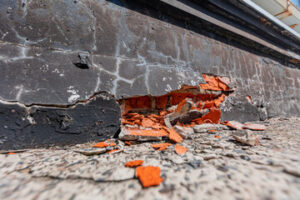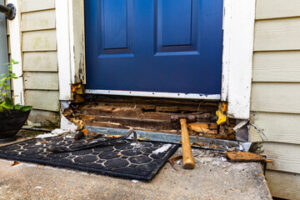Pros Foundation Repair Greensboro NC is essential for maintaining structural integrity and preventing serious problems in the future. However, it can be costly and time-consuming.

What can you do to keep the cost down? Read on to find out more about the different methods of foundation repair, including steel piers, bell-bottom piers, and mudjacking.
The cost of repairing your home’s foundation can vary significantly, depending on the extent of the damage and the type of repair required. Minor repairs, such as filling in cracks or waterproofing solutions, are generally less expensive. More severe damage and structural problems, such as sinking or shifting foundations, require more extensive work and are therefore more expensive.
Location and accessibility also affect the cost of foundation repair. Urban areas may have higher labor and materials costs than rural areas, while repairs in hard-to-reach areas require specialized equipment and add to the overall project cost. Finally, local building codes and permit requirements can increase costs.
In addition to addressing existing foundation problems, contractors may use various methods to stabilize and strengthen your home’s structure. For example, if the soil beneath your home shifts, contractors can install new piers to support your house’s weight. The piers are typically made of steel or concrete and come in different shapes and sizes. Concrete piers are more affordable than steel ones, but both provide excellent support and can last for years.
Another common method of stabilizing your home’s foundation is underpinning. This involves driving long steel rods into the ground until they reach stable soil or bedrock. There are many different underpinning techniques, but the most reliable and long-lasting ones include bell-bottom piers and pressed piles.
When choosing a contractor to perform your foundation repair, be sure to consider their experience and track record. In addition to being licensed and insured, look for a company with local knowledge of soil conditions and climate changes.
You can stay in your home during foundation repair, but it’s a good idea to move furniture away from the walls of your basement and cover them with plastic tarps to keep them clean. It’s also a good idea to keep children and pets out of the area until the work is complete.
Foundation issues don’t go away on their own, so it’s important to act quickly when you notice any signs of damage. By contacting a professional foundation repair expert early on, you can protect your home’s value, safety, and longevity.
Time
The time it takes to complete foundation repair depends on the extent of damage and the method used. Minor crack repairs might only take a few hours, but bowing walls and extensive sinking can extend the work to several days or weeks. It is important to have these issues addressed promptly to prevent further damage and keep your home safe.
It is also helpful to prepare for the repair work in advance to make the process run smoother. This can include moving pictures or wall decor away from the area, removing any items on or around the foundation that may be damaged, and creating a space for the technicians to work. Clearing a path will make it easier for the technicians to move about and can also prevent items from becoming loose or falling during the process.
A quality contractor will have the knowledge and equipment to perform a variety of repair methods. They will also be able to diagnose problems and recommend the best course of action for each individual situation. In addition, these professionals will likely have a good track record of satisfied customers. It is always wise to get multiple quotes and check references before choosing a contractor.
Foundation repair can be a complex and lengthy process, but the results will be worth it in the long run. Professional repairs can prevent further damage and restore the structural integrity of your home or business. It is also more cost-effective to invest in a quality repair than to pay for costly future repairs.
Once the work has been completed, it is normal for your home to continue settling as it adjusts to its new position. It is important to monitor your home for any further signs of uneven settling, such as doors and windows that no longer align properly or small cracks in the walls or ceiling.
It is also crucial to maintain proper grading and drainage around your home to prevent further problems. This will help reduce the amount of water that seeps into the soil around your foundation and causes hydrostatic pressure to exert on it, leading to cracks and sinking. Proper sloping, downspout extensions, and surface drainage can all help to prevent flooding and water pooling that can cause damage to your foundation.
Methods
Choosing the right repair method depends on the severity of your foundation problem and the extent of damage. Minor issues may only need simple patching, while more serious structural problems require more intensive techniques. In addition, it is essential to determine what is causing the problem to prevent it from returning. Inadequate drainage, for example, can cause water to pool around the foundation and erode soil, leading to shifting and cracking. Plumbing leaks also can saturate soil, leading to shifting and uneven settlement. Finally, tree roots that penetrate and saturate soil can lead to heaving and sinking of the foundation.
During a typical foundation repair, contractors perform a visual inspection to assess the extent of damage and choose a suitable method. They then prep the site, including clearing debris and removing obstacles that might hinder the process. They can use various methods to stabilize the foundation, including concrete piers and steel piers. Piers are driven into the ground until they reach a stable layer of soil. They can then be lifted by hydraulic jacks to lift the foundation back into place. Steel piers are the preferred option, as they provide long-term stability.
Infrared scans and thermal imaging cameras can detect moisture, air leaks, and anomalies beneath the surface of the foundation. These tools can be used to create a diagram of the inconsistencies within the foundation and compare it to the visual inspection map to pinpoint the source of the problem. Other non-invasive diagnostic tools include ground penetrating radar (GPR), which uses radar pulses to scan the ground. These tools can identify objects, voids, and differences in soil composition. They can also help locate underground utilities and pipes. In addition, GPR can detect moisture changes and reveal buried debris. Once the inspection is complete, experts can use a variety of techniques to repair the foundation and restore the property to its original condition.
Safety
Foundation problems can impact your home’s quality, safety, and value. They are not just unsightly, but they can affect everything from door and window openings to moisture issues and structural damage. The good news is that a few simple steps can help prevent the problem from getting worse.
The first step is to recognize the warning signs of foundation issues. Cracks in the walls and ceiling are often the first sign, and if left untreated can widen over time. Foundation cracks can indicate a weakened foundation and are often the result of water or soil movement. Other indicators of a deteriorating foundation include leaning walls and doors that no longer close properly.
A professional inspection is an essential step in identifying and fixing the problem. A qualified inspector will walk around your home and look for visible cracks, soil shifting, and other signs of movement. They will also check drainage systems, gutters, down pipes, and landscaping to ensure that they point water away from your home.
The professional will then identify the underlying cause of the problem and recommend a long-term solution. This might include a concrete slab jacking procedure, which involves injecting a specialized material underneath the concrete to lift it back to a level position. This is an effective option for issues resulting from soil movement and can be completed without extensive disruption to the property.
An experienced contractor will also understand the impact of weather on your foundation. Heavy rains can saturate the soil, causing it to expand and add pressure on your foundation. In contrast, drought conditions can dry the soil and cause it to shrink and add stress to your foundation.
Finally, it is important to monitor your home for new cracks and other signs of movement after the repair work is complete. If you find any, be sure to contact your contractor immediately. They may be able to suggest adjustments to your landscaping or drainage system that can prevent future problems. It is also a good idea to perform routine inspections, both inside and out, about twice per year.
